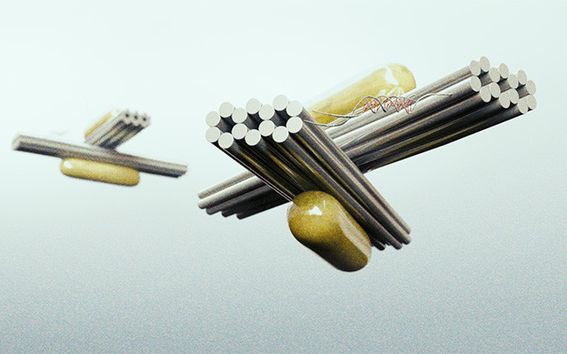Self-assembled nanostructures can be selectively controlled

Plasmonic nanoparticles exhibit properties based on their geometries and relative positions. Researchers have now developed an easy way to manipulate the optical properties of plasmonic nanostructures that strongly depend on their spatial arrangement.
The plasmonic nanoparticles can form clusters, plasmonic metamolecules, and then interact with each other. Changing the geometry of the nanoparticles can be used to control the properties of the metamolecules.
“The challenge is to make the structures change their geometry in a controlled way in response to external stimuli. In this study, structures were programmed to modify their shape by altering the pH,” tells Assistant Professor Anton Kuzyk from Aalto University.
Utilization of programmable DNA locks
In this study plasmonic metamolecules were functionalized with pH-sensitive DNA locks. DNA locks can be easily programmed to operate at a specific pH range. Metamolecules can be either in a “locked” state at low pH or in relaxed state at high pH. Both states have very distinct optical responses. This in fact allows creating assemblies of several types of plasmonic metamolecules, with each type designed to switch at different a pH value.
The ability to program nanostructures to perform a specific function only within a certain pH window could have applications in the field of nanomachines and smart nanomaterials with tailored optical functionalities.
This active control of plasmonic metamolecules is promising for the development of sensors, optical switches, transducers and phase shifters at different wavelengths. In the future, pH-responsive nanostructures could also be useful in the development of controlled drug delivery.
The study was carried out by Anton Kuzyk from Aalto University, Maximilian Urban and Na Liu from Max Planck Institute for Intelligent Systems and the Heidelberg University, and Andrea Idili and Francesco Ricci from the University of Rome Tor Vergata.
More information:
Anton Kuzyk
Assistant Professor
Aalto University
anton.kuzyk@aalto.fi
tel. +358 50 443 0492
Article: Selective control of reconfigurable chiral plasmonic metamolecules
Read more news

Research Council of Finland establishes a Center of Excellence in Quantum Materials
The Centre, called QMAT, creates new materials to power the quantum technology of coming decades.
Major funding powers development of next-generation machine technology aimed at productivity leap in export sectors
The BEST research project is developing new types of sealing, bearing, and damping technology.
The TAIMI project builds an equal working life – a six-year consortium project seeks solutions to recruitment and skill challenges
Artificial intelligence (AI) is changing skill requirements, the population is aging, and the labor shortage is deepening. Meanwhile, the potential of international experts often remains unused in Finland. These challenges in working life are addressed by the six-year TAIMI project funded by the Strategic Research Council, and implemented by a broad consortium.






